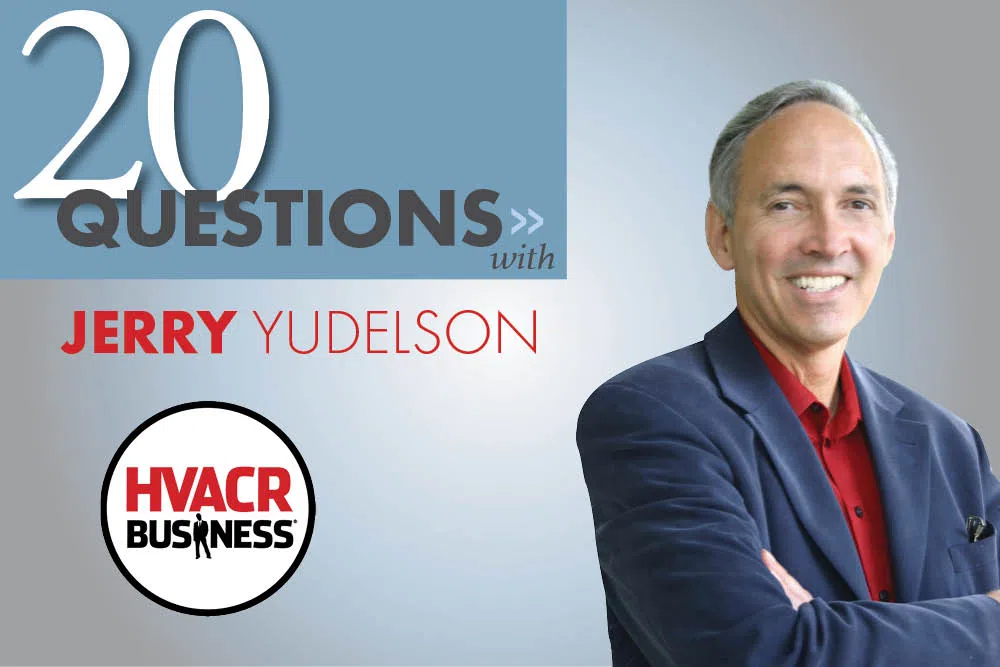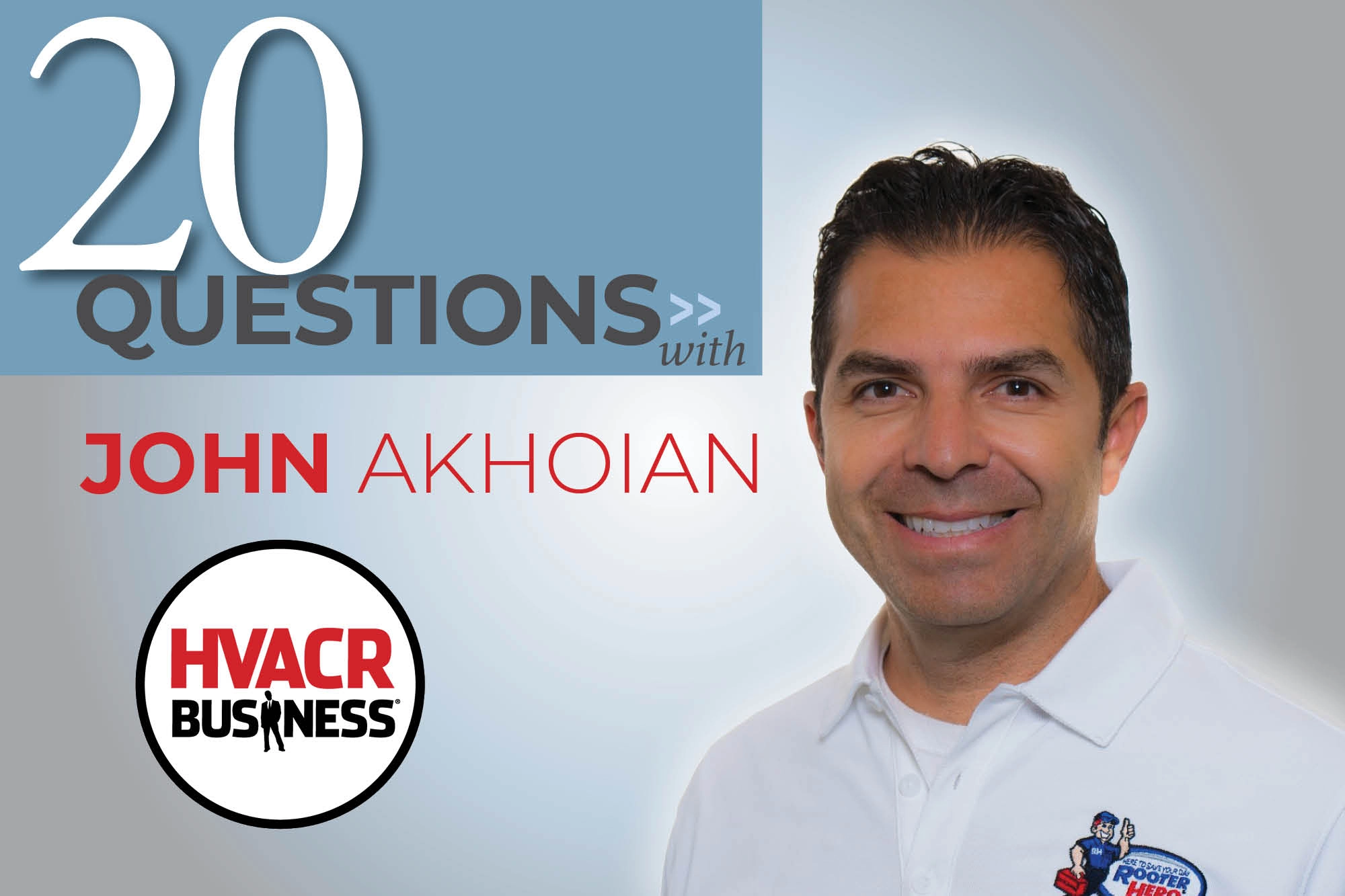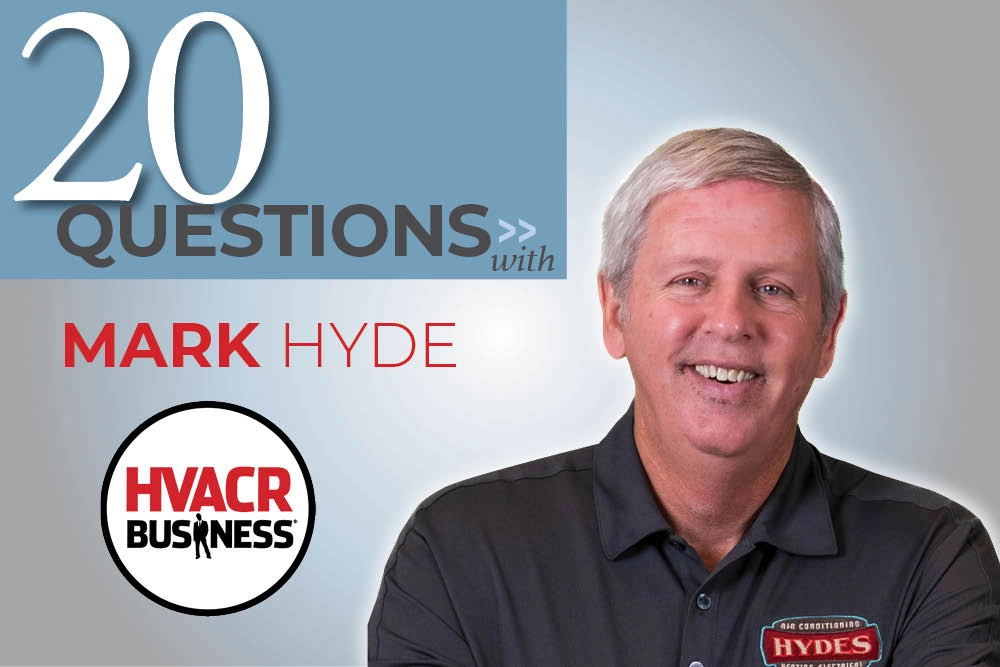Jerry Yudelson, PE, speaker, author, Principal of Yudelson Associates and Chair for Greenbuild Conferences—U.S. Green Building Council 2004-2008, revealed his wit and wisdom to HVACR Business Publisher Terry Tanker. Yudelson offers his take on the green-building movement, his aspirations to be President and his ability to talk to dogs.
1. If you could take over one person's job for one day, whose would it be?
It would be fun to be President of the United States.
2. What useless talent do you have that nobody knows about?
I write pretty good poetry. I can also speak to dogs in a language only they and I can understand.
3. Why is the green-building movement so important?
Commercial buildings contribute about 20 percent of the total U.S. carbon emissions. In this industry, we have the power to change that number dramatically.
4. How has the green-building image changed over the last five years?
The exotic has become commonplace. Most leading architects, engineers and builders have figured out how to design high-performance buildings on a conventional budget.
5. What is the difference between a greenbuilding project now and one 10 years ago?
Ten years ago, there was no agreement on what a green building was, what it should do and who would decide that it's really green. Today, the LEED (Leadership in Energy and Environmental Design) system is accepted as the de facto U.S. national standard, applicable to just about every building type. Today, if you claim you're building a green building and it's not going to be LEEDcertified, you've got a lot of "splainin" to do.
6. Are residential contractors lagging behind in the green movement?
The residential industry isn't that far behind. Since 2004, more than 700,000 U.S. homes have been ENERGY STAR certified.
7. How can contractors get architects to take advantage of basic energysaving techniques?
Point out to the owner how much more expensive the hvac system has to be to overcome basic architectural errors.
8. You have authored several books on the green-building movement; what is your favorite aspect of the process?
I'm an information broker. Writing is a great way to put information into a readable and well-organized format, so that other people don't have to waste time looking for it.
9. Your latest book, Choosing Green: The Home Buyer's Guide to Good Green Homes, is geared toward the consumer. What is the main point you want to drive home with them?
You get what you ask for; so why not ask for a green home? Do your "home work" ahead of time, learn something about building science, homerating systems, builders who are doing the right thing and available incentives and financing.
10. On a scale of 1 to 10, how green is your home?
About an 8. The home was built in 2000 and I purchased it in 2006. I've added 1.5-kW of photovoltaics this year (with space to add 1.5-kW more) and a 40 sq.-ft. solar water heater. I installed two dual-flush toilets to save water. We also replaced some of the more critical windows, in this case on the southeast and west, with low-e, argon-filled, thermally broken, double-pane varieties. Next up is a blower-door and duct-pressurization test to find out how leaky it is, and then making sure all ductwork is inside the conditioned space. We're adding a rainwater harvesting system soon.
11. How can hvacr contractors better market green systems and products?
Read my book, Marketing Green Building Services: Strategies for Success. Everything I know is in there. The No. 1 issue is self-education, finding out what engineers are doing and getting up to speed on new technology. This fall, the MCAA Education and Research Foundation will release my study of European green building technologies. There will be a lot of good ideas in there for
hvacr contractors.
12. What's the biggest hurdle for most hvacr contractors?
CEO leadership is essential. Unless it's a company priority, with dedicated budgets for training and education, not much will change.
13. Has there been significant growth in the number of LEED-registered and certified projects?
Yes. In 2006, the growth in new LEED projects (vs. year-end 2005 cumulative totals) was 50 percent. In 2007, it was 75 percent (vs. year-end 2006). In 2008, we're on track for a 100 percent increase in new projects (vs. year-end 2007).
14. What can government officials do to help communities go green without going overboard with standards and efficiency demands?
First, get their own houses in order. Build each new public building or renovate to LEED Silver or better standards. Retrofit all civic buildings to meet ENERGY STAR standards. Find out what things cost, and how easy they are to do, before passing private-sector mandates.
15. Why won't Congress pass the House Bill to lower depreciation schedules on boilers and chillers from 39 to 20 years — environmentally, it's a no-brainer?
First rule, if it makes sense, but doesn't make a lot of money for a small group of people, it's unlikely to get passed by Congress. Second rule: If you still think it's a good idea, see rule one.
16. How does the Zen concept of wabi-sabi apply to the green movement?
One of my favorite sayings is: "The perfect is the enemy of the good." If we wait for everything to be perfect before beginning something new, we'll never even get to first base. Wabi-sabirecognizes that everything in the phenomenal world is inherently imperfect and transient. Experience teaches the law of unintended consequences, so nothing turns out quite like we want it to. The basic idea is to do the best we can today to make each new building green, and then do even better tomorrow, using lessons learned from today. If we're 5 percent better each year than the year before, then in a decade we'll be 50 percent better than today, and it will seem effortless.
17. You talk about water-free urinals in your book Green Building A to Z. Do you think consumers are ready for a water-free experience?
What's to experience?
18. After 13 SEER and the push toward R410a, what is the next green revolution?
No question, it will be radiant heating and cooling systems, such as chilled beams and chilled ceilings in commercial projects. Once we allow ourselves to separate ventilation from space conditioning, a whole new world of possibilities opens up.
19. What inspired you to take a lead in the green movement?
I helped organize the first Earth Day in 1970 as a student in California. That's how I got my grey hair! The green-building movement is a natural outgrowth of that long-term personal interest.
20. Are you optimistic about a sustainable future?
What's the alternative? Buy a cabin in Idaho, haul water, cut wood and wait for the bitter end? I don't think so. The American way is to roll up our sleeves and get to work! The British statesman, Sir Winston Churchill once said, "Americans always do the right thing…after they've tried everything else." We've tried everything else, non-green and not-so-green. This time, let's do it deep green!






